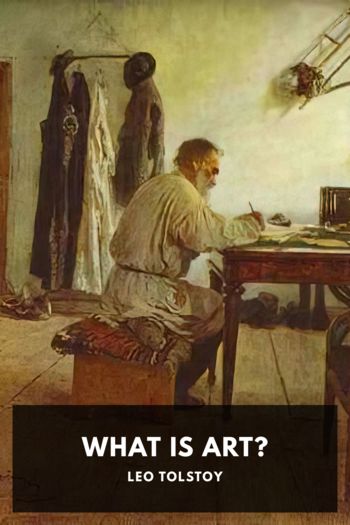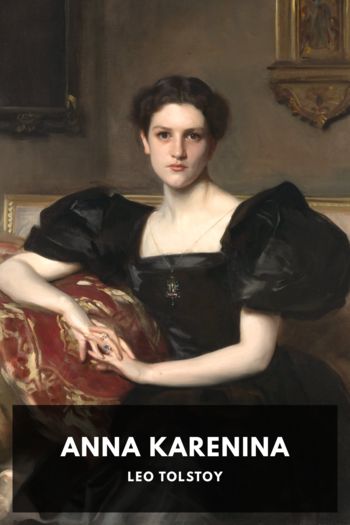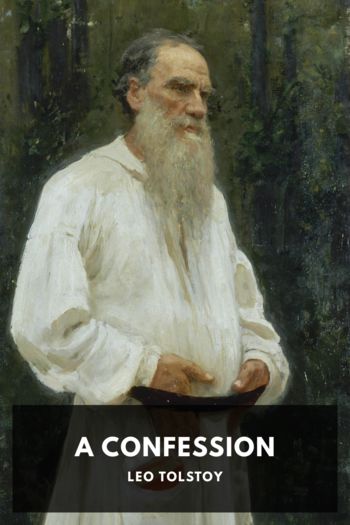What Is Art? by Leo Tolstoy (english readers .txt) 📕

- Author: Leo Tolstoy
Book online «What Is Art? by Leo Tolstoy (english readers .txt) 📕». Author Leo Tolstoy
Expressed in the form of a doctrine these positions startle us. In reality they are implied in the ideal of art serving beauty. The art of our upper classes has educated people in this ideal of the over-man,89—which is, in reality, the old ideal of Nero, Stenka Razin,90 Genghis Khan, Robert Macaire,91 or Napoleon, and all their accomplices, assistants, and adulators—and it supports this ideal with all its might.
It is this supplanting of the ideal of what is right by the ideal of what is beautiful, i.e. of what is pleasant, that is the fourth consequence, and a terrible one, of the perversion of art in our society. It is fearful to think of what would befall humanity were such art to spread among the masses of the people. And it already begins to spread.
Finally, the fifth and chief result is, that the art which flourishes in the upper classes of European society has a directly vitiating influence, infecting people with the worst feelings and with those most harmful to humanity—superstition, patriotism, and, above all, sensuality.
Look carefully into the causes of the ignorance of the masses, and you may see that the chief cause does not at all lie in the lack of schools and libraries, as we are accustomed to suppose, but in those superstitions, both ecclesiastical and patriotic, with which the people are saturated, and which are unceasingly generated by all the methods of art. Church superstitions are supported and produced by the poetry of prayers, hymns, painting, by the sculpture of images and of statues, by singing, by organs, by music, by architecture, and even by dramatic art in religious ceremonies. Patriotic superstitions are supported and produced by verses and stories, which are supplied even in schools, by music, by songs, by triumphal processions, by royal meetings, by martial pictures, and by monuments.
Were it not for this continual activity in all departments of art, perpetuating the ecclesiastical and patriotic intoxication and embitterment of the people, the masses would long ere this have attained to true enlightenment.
But it is not only in Church matters and patriotic matters that art depraves; it is art in our time that serves as the chief cause of the perversion of people in the most important question of social life—in their sexual relations. We nearly all know by our own experience, and those who are fathers and mothers know in the case of their grown-up children also, what fearful mental and physical suffering, what useless waste of strength, people suffer merely as a consequence of dissoluteness in sexual desire.
Since the world began, since the Trojan war, which sprang from that same sexual dissoluteness, down to and including the suicides and murders of lovers described in almost every newspaper, a great proportion of the sufferings of the human race have come from this source.
And what is art doing? All art, real and counterfeit, with very few exceptions, is devoted to describing, depicting, and inflaming sexual love in every shape and form. When one remembers all those novels and their lust-kindling descriptions of love, from the most refined to the grossest, with which the literature of our society overflows; if one only remembers all those pictures and statues representing women’s naked bodies, and all sorts of abominations which are reproduced in illustrations and advertisements; if one only remembers all the filthy operas and operettas, songs and romances with which our world teems, involuntarily it seems as if existing art had but one definite aim—to disseminate vice as widely as possible.
Such, though not all, are the most direct consequences of that perversion of art which has occurred in our society. So that, what in our society is called art not only does not conduce to the progress of mankind, but, more than almost anything else, hinders the attainment of goodness in our lives.
And therefore the question which involuntarily presents itself to every man free from artistic activity and therefore not bound to existing art by self-interest, the question asked by me at the beginning of this work: Is it just that to what we call art, to a something belonging to but a small section of society, should be offered up such sacrifices of human labour, of human lives, and of goodness as are now being offered up? receives the natural reply: No; it is unjust, and these things should not be! So also replies sound sense and unperverted moral feeling. Not only should these things not be, not only should no sacrifices be offered up to what among us is called art, but, on the contrary, the efforts of those who wish to live rightly should be directed towards the destruction of this art, for it is one of the most cruel of the evils that harass our section of humanity. So that, were the question put: Would it be preferable for our Christian world to be deprived of all that is now esteemed to be art, and, together with the false, to lose all that is good in it? I think that every reasonable and moral man would again decide the question as Plato decided it for his Republic, and as all the Church Christian and Muhammadan teachers of mankind decided it, i.e. would say, “Rather let there be no art at all than continue the depraving art, or simulation of art, which now exists.” Happily, no one has to face this question, and no one need adopt either solution. All that man can do, and that we—the so-called educated people, who are so placed that we have the possibility of understanding the meaning of the phenomena of our life—can and should do, is to understand the error we are involved in, and not harden our hearts in it but seek for a way of escape.
XVIIIThe cause of the lie





Comments (0)